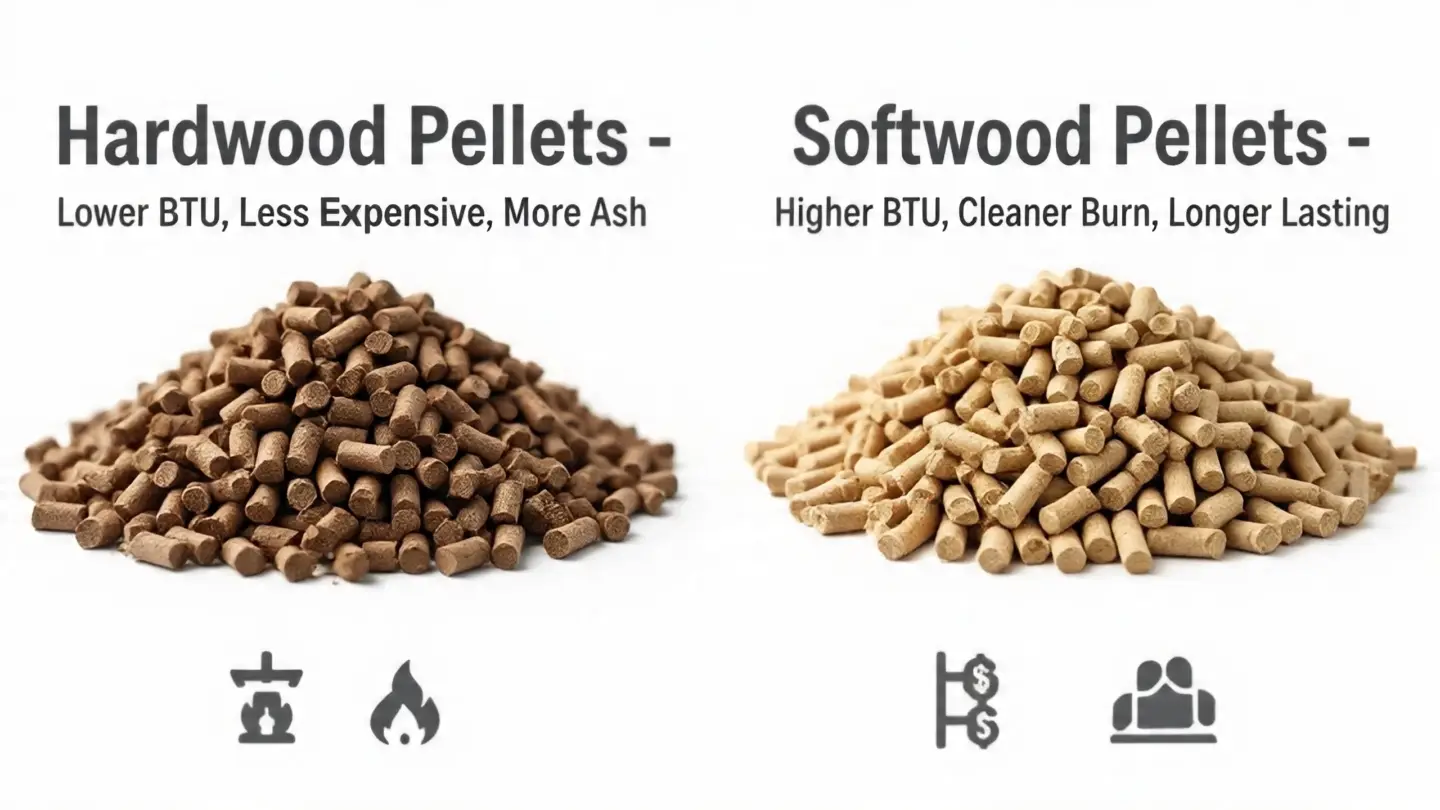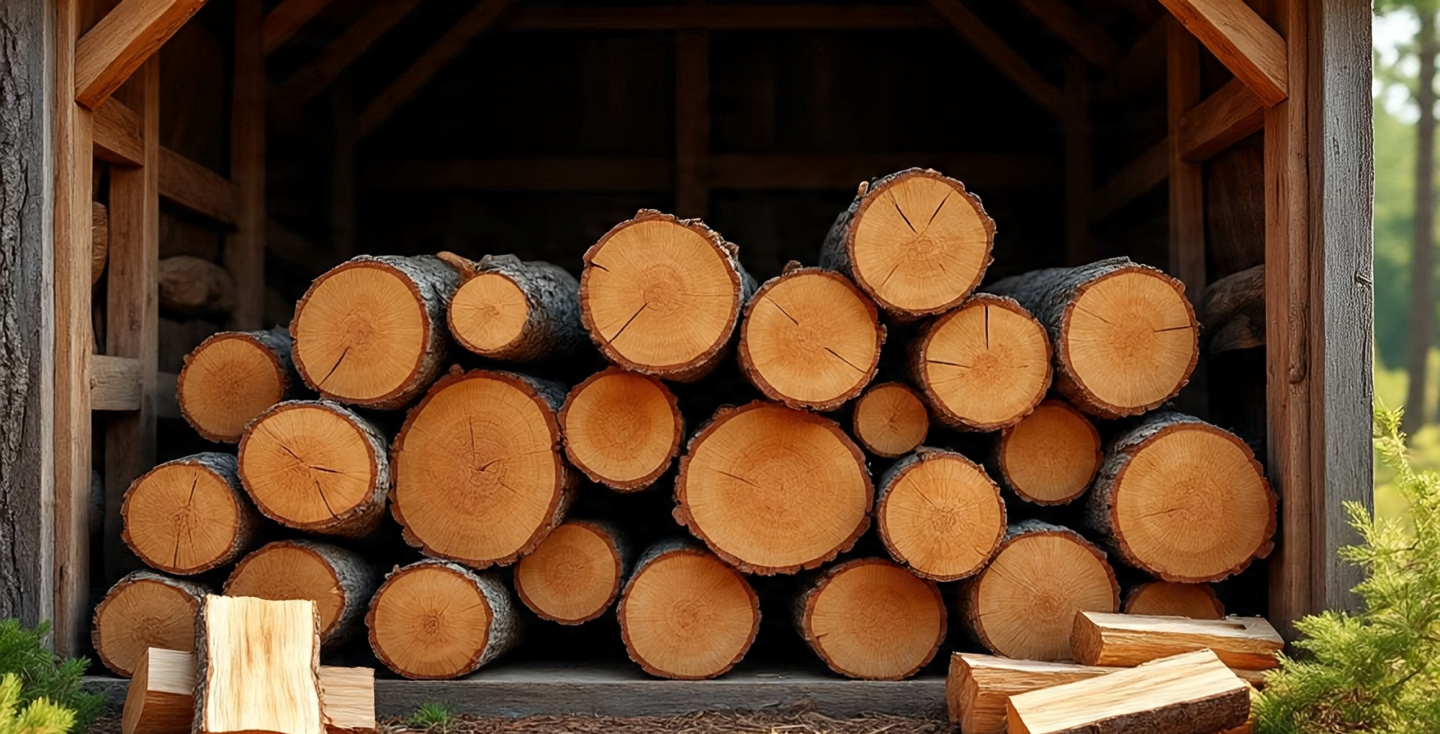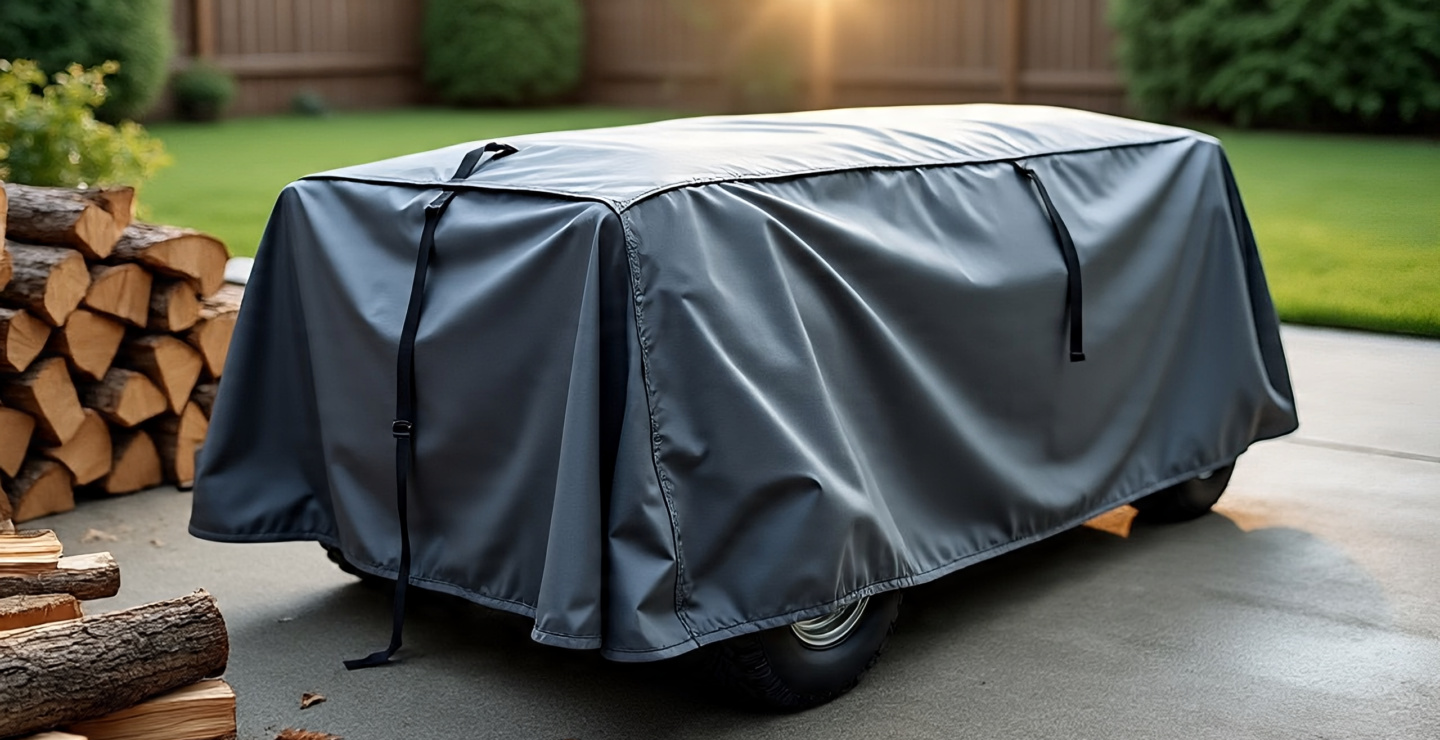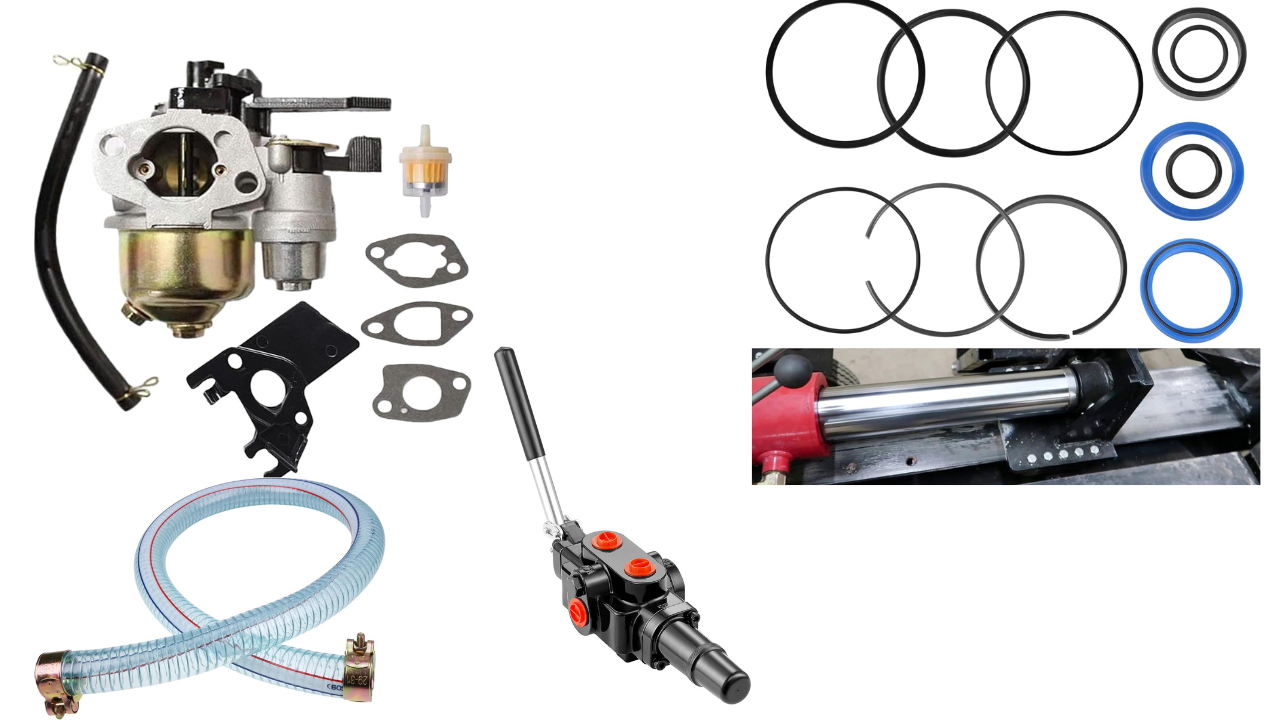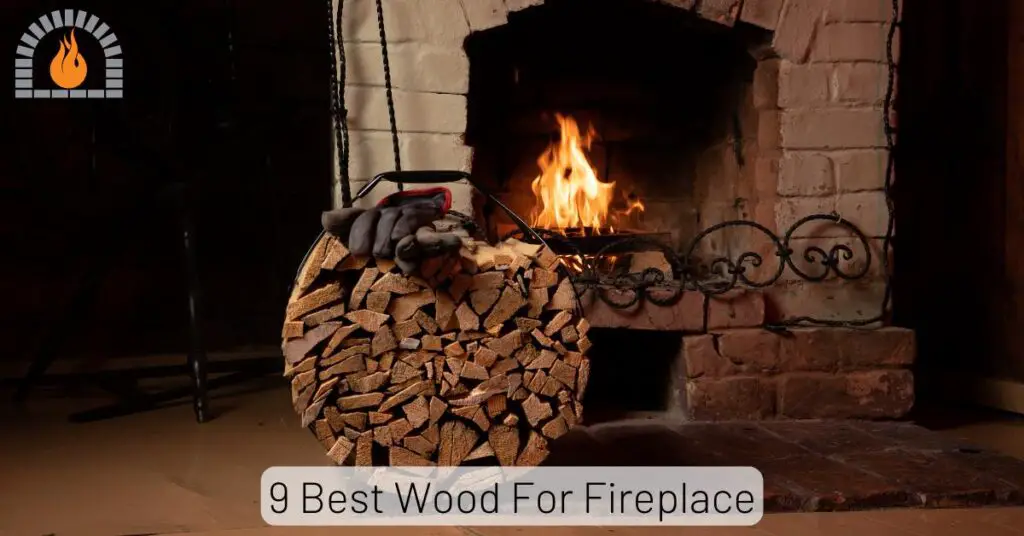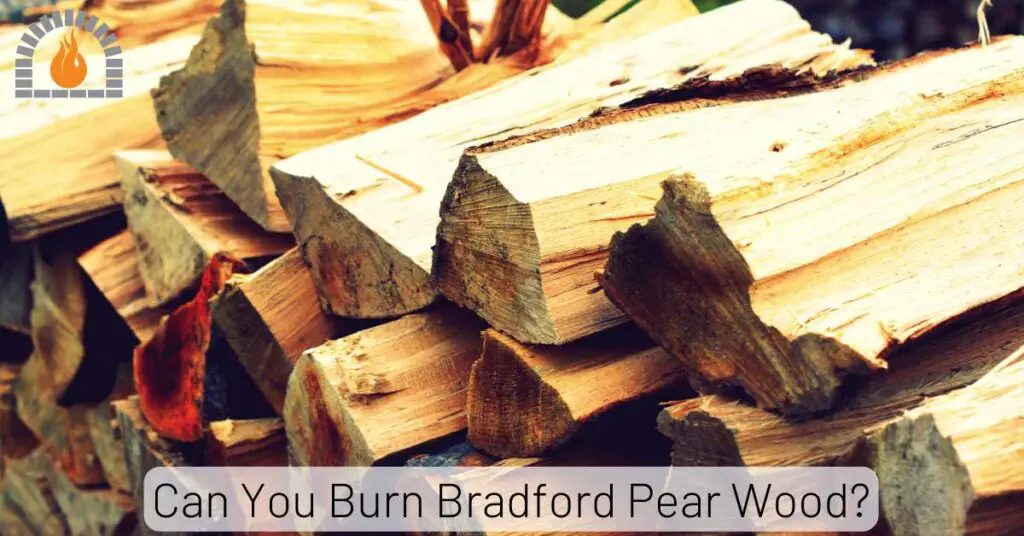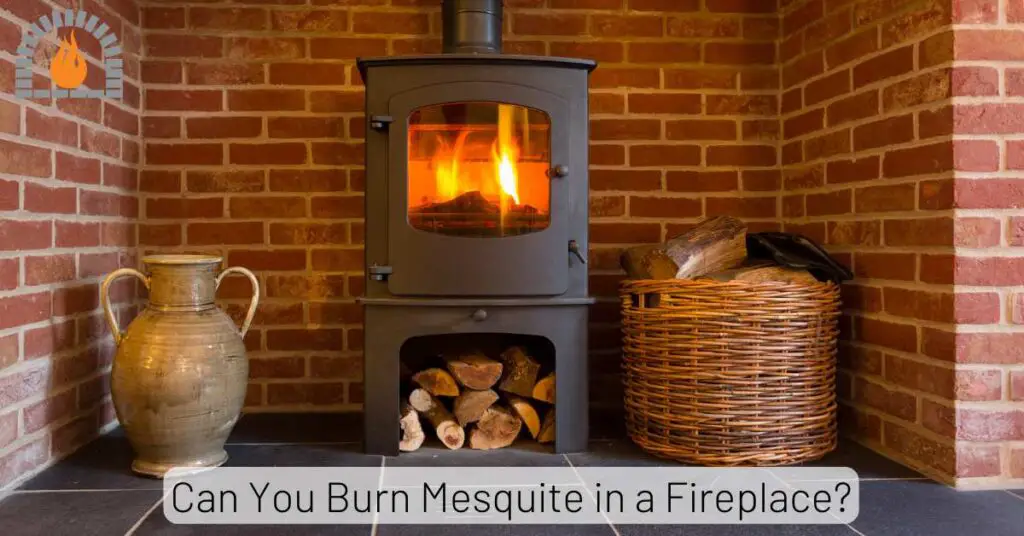Osage Orange firewood, also known as hedge, hedge apple, or bois d’arc, is one of the most fascinating and misunderstood firewoods you can burn. Found primarily in the central United States, this dense hardwood has earned a legendary reputation among firewood enthusiasts for being one of the hottest-burning woods available. But while it delivers incredible heat, it also comes with quirks that make it both loved and hated depending on who you ask.
If you’ve ever seen a stack of Osage Orange logs, you’ll notice they’re extremely dense and heavy. That density is the secret behind their high BTU rating, which measures how much heat a particular wood produces.
In fact, Osage Orange ranks near the very top of the firewood heat charts, outperforming even oak and hickory in terms of energy per cord. But the story doesn’t end there—its unique burning characteristics, sparks, seasoning requirements, and availability make it worth exploring in detail.
Here are some quick stats about Osage Orange firewood to set the stage:
- BTU rating: 32–33 million BTUs per cord (among the highest of all firewoods).
- Burn quality: Long-lasting, steady, but can spark heavily.
- Seasoning time: About 1–2 years due to density.
- Hardness: Extremely hard, difficult to split by hand.
- Best use: Outdoor fire pits, wood stoves, or as supplemental heating wood.
So, is Osage Orange good firewood, or is it too much trouble for the average wood burner? Let’s break it down step by step.
Osage Orange Firewood Key Stats
| Feature | Details |
|---|---|
| BTU Rating (per cord) | 32–33 million BTUs – among the hottest-burning firewoods available |
| Burn Duration | Extremely long-lasting; produces dense, steady heat and long-lasting coals |
| Smoke Production | Low when properly seasoned |
| Spark Production | Very high – throws sparks, not ideal for open fireplaces |
| Creosote Buildup | Low compared to many woods, but sparks require careful chimney maintenance |
| Seasoning Time | 1–2 years due to density |
| Splitting Difficulty | Very difficult by hand; best with a hydraulic splitter |
| Hardness/Density | One of the hardest North American hardwoods (harder than oak & hickory) |
| Weight | Extremely heavy when green; lighter once seasoned |
| Color/Appearance | Golden-yellow heartwood that darkens to brown with age |
| Best Uses | Wood stoves, furnaces, outdoor fire pits, supplemental heating |
| Not Recommended For | Open fireplaces (due to sparks), quick seasoning needs |
| Availability | Mostly found in the Midwest & Great Plains (limited outside these regions) |
| Average Cost | $250–$400 per cord, depending on location and supply |
| Eco-Friendliness | Sustainable, efficient, and carbon-neutral when harvested responsibly |
Characteristics of Osage Orange Wood
Osage Orange is a hardwood heavyweight, both literally and figuratively. The wood is so dense that some people compare splitting it to trying to break apart stone. Unlike softer woods that almost pop apart when struck with an axe, Osage Orange requires serious force—or a hydraulic splitter—to break down into usable chunks.
The density and hardness of Osage Orange are legendary. It is harder than oak, maple, or even hickory, which is why it was once prized for making bows, fence posts, and tool handles. In fact, its Native American name bois d’arc literally means “wood of the bow.” That strength translates directly into heat output: the denser the wood, the more energy it stores, and the longer it burns.
Visually, Osage Orange has a distinct golden-yellow heartwood that darkens to a rich brown over time. Its grain is usually straight but can have some twists, making it resistant to splitting. The wood is smooth and fine-textured, which contributes to its durability. You’ll notice that fresh-cut Osage Orange has a bright yellow hue that almost glows in the sunlight—it’s unmistakable.
But let’s not sugarcoat it: splitting Osage Orange is a chore. If you’re someone who enjoys splitting wood with a maul as a workout, this tree might break your spirit before you break it. For most people, a hydraulic splitter is the only practical option. However, once it’s split and stacked, you’re rewarded with one of the finest-burning firewoods on earth.
Heat Output of Osage Orange
When it comes to heat, Osage Orange is simply a powerhouse. Its BTU rating of around 32–33 million per cord makes it one of the hottest-burning woods you can put in your stove. To put that in perspective, here’s a quick comparison:
| Firewood Type | BTUs per Cord (Approx.) |
|---|---|
| Osage Orange | 32–33 million |
| Hickory | 28–30 million |
| White Oak | 26–28 million |
| Sugar Maple | 24–26 million |
| Pine | 15–17 million |
That means a cord of Osage Orange can deliver almost twice the heat of softer woods like pine. For homeowners looking to cut down on how much wood they need to burn through the winter, Osage Orange is a dream. You get more heat with less volume, which also means fewer trips to the woodpile.
But it’s not just about sheer heat—it’s also about how long it burns. Osage Orange creates long-lasting coals, which are perfect for keeping a stove warm overnight without needing constant refueling. It doesn’t just flare up and die quickly; instead, it burns hot, steady, and slow, making it ideal for deep winter nights when consistent warmth is essential.
The flip side? Because it burns so hot, it can be too much for some stoves and fireplaces if you load them to the brim. Overfiring can damage stoves not built to handle such intense heat. That’s why many seasoned wood burners recommend mixing Osage Orange with oak or another hardwood to balance out the fire.
Smoke, Sparks, and Safety
If Osage Orange has one reputation that sticks, it’s the sparks. This wood is notorious for sending off showers of sparks, especially when burned in an open fireplace or outdoor pit. That means it requires extra caution—you don’t want to load up a fireplace with Osage Orange and leave the room unattended. Sparks can shoot several feet, making it risky in settings where there’s carpet, pets, or kids nearby.
On the bright side, Osage Orange produces very little smoke when properly seasoned. Unlike some woods that fill the chimney with creosote, Osage Orange burns clean. However, its sparks can contribute to creosote buildup over time, so regular chimney maintenance is still important.
For safety, most experts recommend using Osage Orange outdoors or in wood stoves with secure doors rather than in open fireplaces. It shines in outdoor fire pits because the sparks become less of an issue, and its bright, long-lasting flames create a beautiful and warm campfire.
One more note on safety: because Osage Orange burns so hot, it’s essential not to overload your stove or pit. A small amount goes a long way, and moderation is key. Think of it like hot chili peppers—you don’t need to dump the whole jar in to get the effect.
Seasoning Osage Orange Firewood
Like all hardwoods, Osage Orange needs to be properly seasoned before burning. Because it is extremely dense, it takes longer to dry out compared to softer woods. A good rule of thumb is to let it season for at least 1–2 years before burning. Rushing the process means you’ll end up with wet, smoky fires that waste the wood’s potential.
When seasoning Osage Orange, proper stacking is crucial. Place it in a sunny, well-ventilated area and keep the bottom row off the ground to prevent rot. Covering the top with a tarp is fine, but leave the sides open for airflow. The more wind and sun exposure it gets, the better.
How do you know when it’s ready? Fully seasoned Osage Orange will:
- Feel significantly lighter than when freshly cut.
- Produce a hollow “clunk” sound when two pieces are struck together.
- Have cracks forming on the ends of the logs.
Comparison with Other Popular Firewoods
When deciding if Osage Orange is worth the effort, it helps to compare it directly to other well-known firewoods. While it shines in certain areas, it also has drawbacks when stacked against oak, hickory, and maple. Let’s look at how it measures up.
Osage Orange vs. Oak
Oak is considered the “gold standard” of firewood because it’s widely available, relatively easy to split, and burns hot with a steady flame. Compared to oak, Osage Orange has a higher BTU rating, meaning it delivers more heat per cord. However, oak has the advantage of being less sparky and more predictable in burning behavior. Oak is also easier to split than Osage Orange, though still a challenge compared to softwoods. If you want maximum heat, Osage Orange is the winner, but for balance, oak remains a favorite.
Osage Orange vs. Hickory
Hickory is another heavyweight contender in the firewood world. Known for its excellent coaling ability and sweet aroma, hickory is often used for smoking meats as well as heating. While Osage Orange edges hickory in sheer heat output, hickory burns cleaner with fewer sparks. Hickory also seasons faster, usually within a year, while Osage Orange can take nearly twice as long to fully dry. For those who cook outdoors often, hickory might be more versatile, but for sheer heat, Osage Orange remains unmatched.
Osage Orange vs. Maple
Maple, particularly sugar maple, is a reliable hardwood with a moderate burn time and decent heat output. Compared to Osage Orange, maple is far easier to split and seasons faster. However, maple produces significantly less heat—sometimes as much as 8–10 million BTUs fewer per cord. If you have limited storage space and want maximum energy packed into your woodpile, Osage Orange clearly beats maple. But if ease of preparation is your priority, maple is much more forgiving.
In short, Osage Orange tops the charts for raw heating power, but it’s more challenging to work with. If you’re willing to invest the effort, it can outperform almost any other firewood in terms of warmth and longevity.
Benefits of Burning Osage Orange
Despite its quirks, Osage Orange has plenty of benefits that make it highly sought after by seasoned wood burners.
High Heat Output
The biggest advantage is its exceptional heat output. With one of the highest BTU ratings of all North American firewoods, Osage Orange is perfect for cold winters where temperatures dip below freezing for weeks on end. A single load in a wood stove can keep a home warm for hours without needing constant attention.
Long-Lasting Coals
Another benefit is the quality of its coals. After the flames die down, Osage Orange leaves behind glowing coals that last for hours. This is particularly useful for overnight burns when you don’t want to wake up at 3 a.m. to feed the fire. Long-lasting coals also make it easier to restart the fire in the morning without using a lot of kindling.
Sustainability and Eco-Friendliness
Osage Orange is not only a powerhouse fuel but also an eco-friendly option. The trees are hardy, grow quickly in the right conditions, and are often planted as windbreaks or fence rows. Because the wood is so dense, you need less of it to produce the same amount of heat as other firewoods, which reduces overall wood consumption. Additionally, Osage Orange burns efficiently when seasoned, producing less smoke and fewer emissions compared to softer woods.
In short, if you’re after maximum efficiency, sustainability, and heat, Osage Orange is hard to beat.
Drawbacks and Challenges
Of course, no firewood is perfect, and Osage Orange has its fair share of drawbacks that make some people steer clear of it.
Difficult to Split
The first major challenge is its incredible hardness. Splitting Osage Orange with a maul or axe is exhausting and often unproductive. Many people give up and use a hydraulic splitter instead. This means extra time, effort, or equipment is needed to prepare it for burning.
Excessive Sparks
Another common complaint is the sparking issue. Osage Orange is notorious for throwing sparks—sometimes explosively. While beautiful in an outdoor fire pit, it can be a real hazard in open fireplaces. Sparks can damage carpets, furniture, or even start accidental fires if precautions aren’t taken.
Limited Availability
Lastly, Osage Orange isn’t as widely available as oak, maple, or hickory. It’s mostly found in the central United States, and even there, it isn’t harvested as extensively as other hardwoods. This limited availability often makes it more expensive per cord compared to more common firewoods.
So while it’s an excellent wood in terms of heat, not everyone will find it practical to use regularly.
Best Uses for Osage Orange Firewood
Despite its drawbacks, Osage Orange shines in specific situations where its unique properties are most useful.
Heating Homes
For homeowners with efficient wood stoves or furnaces, Osage Orange is ideal for providing consistent heat through cold winter nights. Its long burn time and high heat output make it especially valuable in regions where winters are harsh and prolonged.
Outdoor Fire Pits
Osage Orange is also a favorite for outdoor fires. The sparks, while hazardous indoors, create a dazzling show in a safe outdoor pit. Its bright, long-lasting flames provide both heat and ambiance, making it a great choice for camping trips or backyard gatherings.
Cooking and Smoking
While not commonly used for smoking meats like hickory or applewood, Osage Orange can still be used for outdoor cooking when handled carefully. Its long-lasting coals make it excellent for grilling, though its strong smoke flavor may not appeal to everyone. Some pitmasters blend it with milder woods to balance out the taste.
In essence, Osage Orange is best reserved for outdoor burning or controlled stoves, where its sparks and heat can be managed safely.
Cost and Availability
The cost and availability of Osage Orange firewood can vary significantly depending on your location.
Regional Availability
Osage Orange is most commonly found in the Midwestern and Great Plains states, including Kansas, Oklahoma, Texas, and Missouri. Outside of these areas, it becomes harder to find, as it isn’t typically harvested on a large scale like oak or maple.
Average Cost per Cord
Because of its limited distribution and high demand among firewood enthusiasts, Osage Orange often costs more per cord than more common hardwoods. Prices typically range from $250 to $400 per cord, depending on your region and whether the wood is seasoned or green. In areas where it’s abundant, prices may be more competitive, but in regions where it’s scarce, expect to pay a premium.
Buying Tips
If you’re looking to buy Osage Orange firewood, keep these tips in mind:
- Check local classifieds or firewood suppliers in Midwestern states.
- Buy early in the year—waiting until winter often means higher prices.
- Ask if it’s seasoned—green Osage Orange takes a long time to dry, so make sure you know what you’re getting.
While more expensive and harder to source than oak or maple, the efficiency of Osage Orange means you’ll need less of it to heat your home effectively.
Tips for Storing Osage Orange
Proper storage of Osage Orange firewood is crucial because of its density and long seasoning time. If not stacked and stored correctly, even this durable hardwood can suffer from mold, rot, or insect infestations. With some care, though, Osage Orange can last for years in your woodpile without losing its potency.
Proper Stacking Methods
The key to good storage is airflow. Because Osage Orange is dense, it needs maximum exposure to air to dry properly. Stack the wood in rows with space between them rather than cramming it all together in one giant pile. This allows wind and sunlight to penetrate through the stack and dry the wood evenly. Elevating the bottom row on pallets, rails, or even a few stones prevents ground moisture from seeping in.
For extra airflow, some people use a cross-stacking method, where the logs are alternated at right angles at the ends of the pile. This not only keeps the stack sturdy but also improves circulation around the edges.
Avoiding Moisture and Rot
Osage Orange is naturally rot-resistant, but that doesn’t mean it’s immune to water damage. If left sitting in damp conditions, even this hardy wood can develop surface mold or lose some of its burning efficiency. Avoid stacking it directly against walls or fences where air can’t circulate. Instead, choose an open area with plenty of sun exposure.
Covering Firewood Effectively
When covering Osage Orange, resist the urge to wrap it entirely in plastic or tarps. Doing so traps moisture inside, defeating the purpose of seasoning. Instead, cover only the top of the stack with a tarp or metal roofing to keep off rain and snow, leaving the sides exposed for airflow. This way, the wood stays dry while continuing to season.
When stored correctly, Osage Orange can remain usable for years, and because of its hardness, it often outlasts softer woods in the pile. Proper storage ensures you’ll get the full benefit of its heat when winter comes.
Environmental Impact
Burning firewood always raises questions about sustainability and environmental responsibility. Luckily, Osage Orange performs well in this area compared to many other options.
Carbon Footprint
When burned, Osage Orange releases carbon dioxide that it absorbed during its lifetime, making it a carbon-neutral fuel when harvested responsibly. Because it burns hotter and longer than most other woods, you need less wood overall to generate the same amount of heat. This efficiency reduces the total carbon footprint of your heating system compared to using larger volumes of lower-BTU woods.
Invasiveness of Osage Orange
Osage Orange trees were originally native to a small area of Texas, Oklahoma, and Arkansas. However, they were widely planted across the U.S. as natural windbreaks and fence rows during the 19th and 20th centuries. Today, they are common in many areas and sometimes considered invasive because of how quickly they spread. From an environmental standpoint, harvesting Osage Orange for firewood can actually be beneficial by helping control its spread in certain regions.
Replanting and Conservation
While Osage Orange is not endangered, responsible harvesting is still important. Planting new trees or leaving seed-producing trees standing ensures a continued supply for future generations. Because Osage Orange is so rot-resistant, its wood is also used in construction and fencing, giving it a dual-purpose benefit beyond firewood. This versatility makes it a sustainable choice compared to some species harvested solely for burning.
Overall, Osage Orange is a responsible option for eco-conscious wood burners, especially when sourced locally.
Is Osage Orange Right for You?
By now, it’s clear that Osage Orange is both remarkable and demanding. But is it the right firewood for your situation?
Who Should Use It
- Homeowners with efficient wood stoves who want maximum heat per cord.
- People in regions with harsh winters who need steady, long-lasting fires.
- Outdoor fire pit enthusiasts who enjoy bright flames and sparks.
- Eco-conscious users who value sustainable, high-efficiency fuel.
Who Should Avoid It
- Those without a hydraulic splitter, since splitting by hand is nearly impossible.
- People relying on open fireplaces, due to its tendency to spark.
- Anyone who needs quick-seasoning firewood—this wood requires patience.
- Regions where it’s scarce, since the cost may outweigh the benefits.
Final Considerations
Osage Orange is not for everyone, but for those willing to put in the effort, it can be one of the best firewoods available. Think of it as the “premium fuel” of the firewood world—demanding, but highly rewarding.
Fun Facts about Osage Orange
Beyond its practical uses, Osage Orange is full of fascinating quirks that make it stand out from other firewoods.
Other Names (Hedge, Hedge Apple, Bois d’Arc)
Depending on where you live, Osage Orange might go by a different name. In the Midwest, it’s often called hedge or hedge apple because of the large, bumpy green fruit it produces. French settlers named it bois d’arc, meaning “wood of the bow,” because of its use in bow-making by Native Americans.
Historical Uses
Long before it became popular firewood, Osage Orange was valued for its strength and durability. Native Americans crafted powerful bows from it, while early settlers used it for fence posts because of its rot resistance. In fact, some Osage Orange fence posts placed over a century ago are still standing strong today, an impressive testament to the wood’s durability.
Unique Properties
Osage Orange is known for its bright yellow heartwood, which can be used to create natural dyes. The fruit, while not edible for humans, is sometimes placed around homes as a natural insect repellent. Some people swear by hedge apples for keeping spiders away, though scientific evidence is mixed.
It’s also worth noting that Osage Orange is one of the hardest woods in North America—so dense that some pieces can even dull chainsaws quickly. This toughness is both a blessing for durability and a curse when trying to split it for firewood.
Final Thoughts
Osage Orange firewood is in a class of its own. With an unmatched heat output, long-lasting coals, and exceptional durability, it’s a favorite among serious wood burners. However, its challenges—like difficult splitting, excessive sparks, and limited availability—mean it isn’t always practical for casual users. If you have the right equipment and storage space, Osage Orange can deliver warmth and efficiency that few other woods can match.
So, whether you’re heating a home in the dead of winter or enjoying a roaring fire outdoors, Osage Orange proves itself as one of the toughest yet most rewarding firewoods you’ll ever burn.
You May Also Like:
Hardwood vs Softwood Pellets: BTU, Cost & Efficiency Explained
When choosing between hardwood vs softwood pellets for your heating needs, you’re deciding between two distinct fuel sources with unique…
Larch Firewood: Is It Good to Burn? Pros, Cons & Heating Value
Larch firewood is a softwood that offers moderate heating value and is known for its pleasant aroma when burned. While…
9 Waterproof Log Splitter Covers: Weather-Resistant Collection 2025
Keeping your equipment protected from rain, snow, and harsh UV rays is essential, and the right Log Splitter Cover can…

Stihl Chainsaw Sharpener: (2 in 1) Usage Guide & Safety
A sharp chainsaw chain isn’t just a convenience—it’s essential for safety, efficiency, and the longevity of your equipment. The Stihl…
Sharpening Chainsaw Angles Chart: All You Need To Know
Properly sharpening your chainsaw chain is crucial for optimal performance, safety, and extending the life of your equipment. The correct…
Country Line Log Splitter Parts: Replacement Installation Guide
When your Country Line log splitter starts showing signs of wear or stops functioning efficiently, knowing how to identify and…
FAQs
Is Osage Orange the hottest-burning firewood?
Yes, Osage Orange is often ranked at or near the very top of firewood heat charts, with a BTU rating of 32–33 million per cord.
How long does Osage Orange firewood last?
Properly seasoned Osage Orange can last for years in storage and burns longer per load than most other firewoods, thanks to its dense structure.
Can you cook with Osage Orange wood?
Yes, though it produces a strong smoke flavor that not everyone enjoys. It’s best blended with milder woods for smoking meats.
Is Osage Orange safe for indoor fireplaces?
It can be used indoors, but only in closed wood stoves or fireplaces with proper screens due to its excessive sparking.
What makes Osage Orange unique compared to oak or hickory?
Its extreme density, unmatched heat output, bright yellow heartwood, and historical uses set it apart from oak, hickory, and other hardwoods.
Affiliate Disclosure: Fireplaceadviser.com is a participant in the Amazon Services LLC Associates Program. We may earn a commission when you click on certain links on this site and purchase.

Hello!! I am Jamal Khan. I often fix my home electric heaters and gas stove problems and research the common issues in the heating units to improve my knowledge and expertise. The aim of establishing fireplaceadviser.com is to share my expertise and knowledge with my audience.













